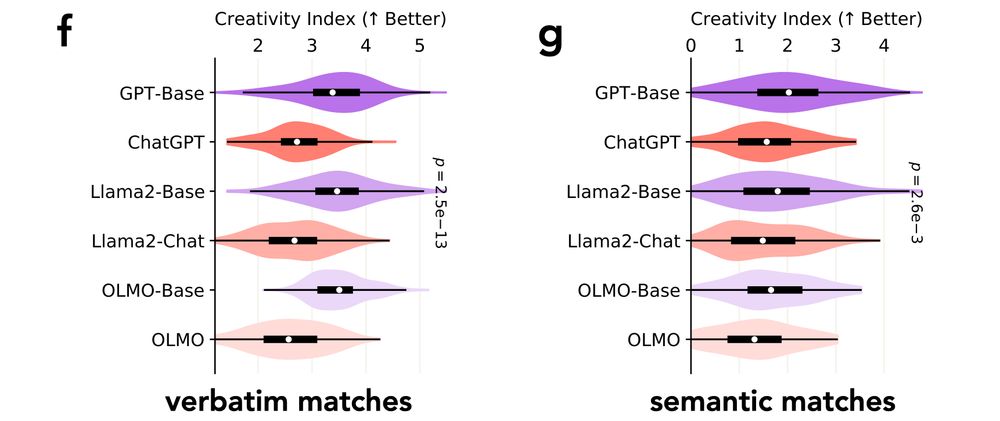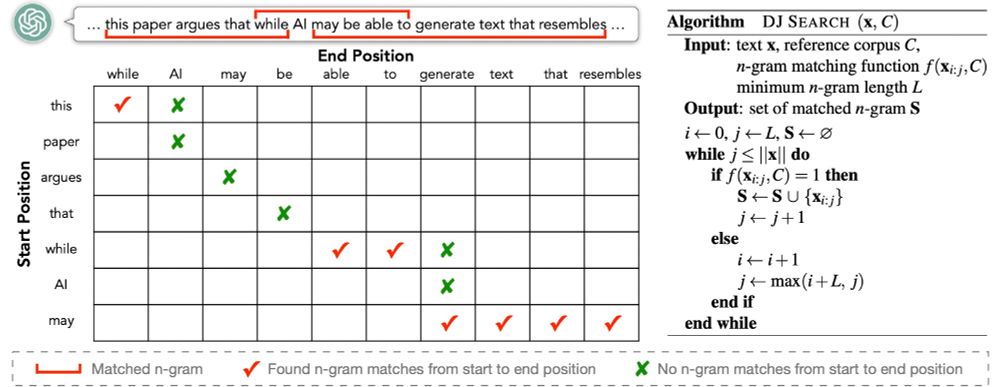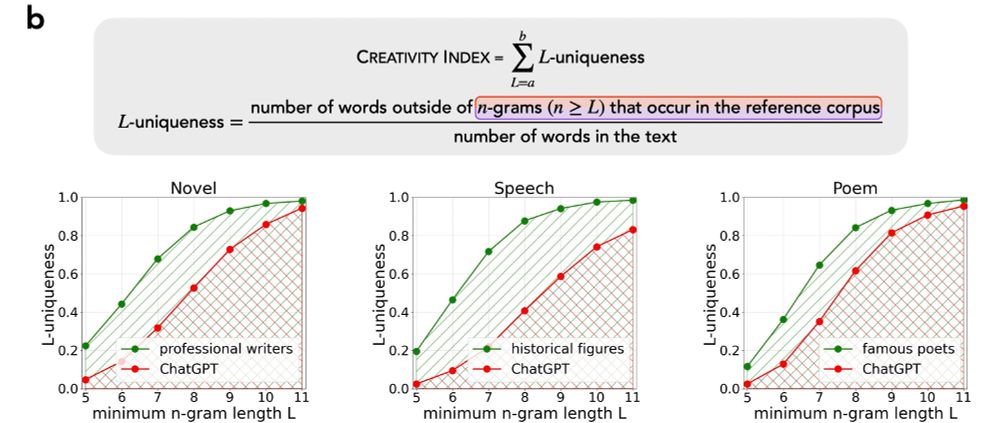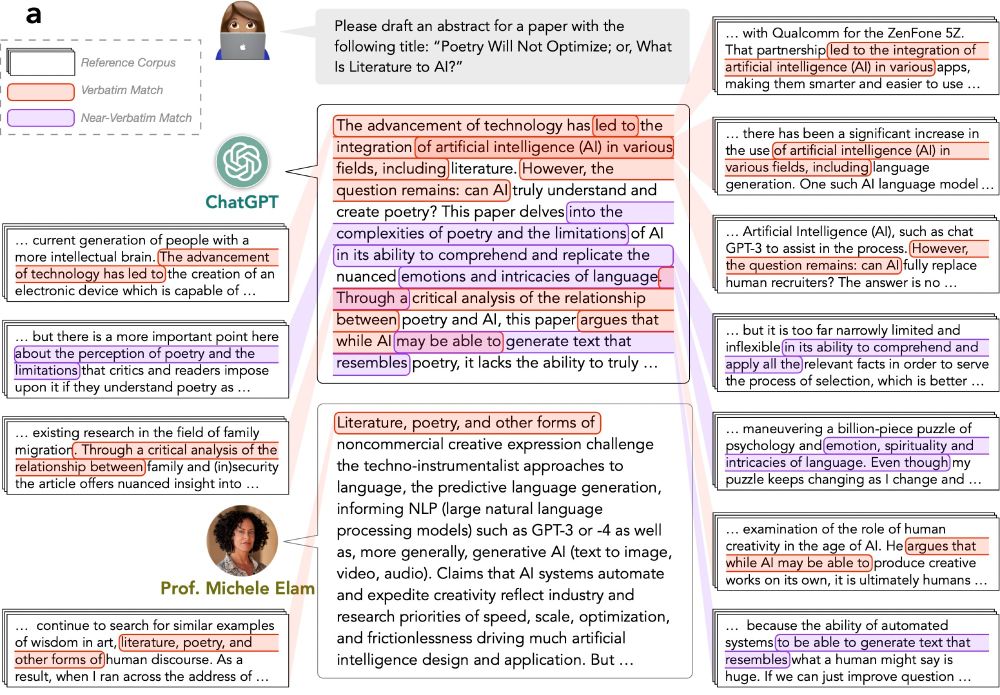
arxiv.org/pdf/2407.04295
arxiv.org/pdf/2407.04295
The stream will be recorded—catch it later if you can't join live! 🚀
The stream will be recorded—catch it later if you can't join live! 🚀
bsky.app/profile/yoav...
Did you look at pre-post-training models?
(show some hyphen love ❤️)
Models that learn from feedback train on their own outputs, so you see performance 📈 but language diversity 📉. We show that if you couple comprehension and generation you learn faster 🏎️ AND get richer language!
arxiv.org/abs/2408.15992
Demo and video ⬇ + in EMNLP!

bsky.app/profile/yoav...
Did you look at pre-post-training models?
(show some hyphen love ❤️)





The CREATIVITY INDEX is then defined as the area under the L-uniqueness curve across a range of minimum n-gram lengths L.

The CREATIVITY INDEX is then defined as the area under the L-uniqueness curve across a range of minimum n-gram lengths L.


